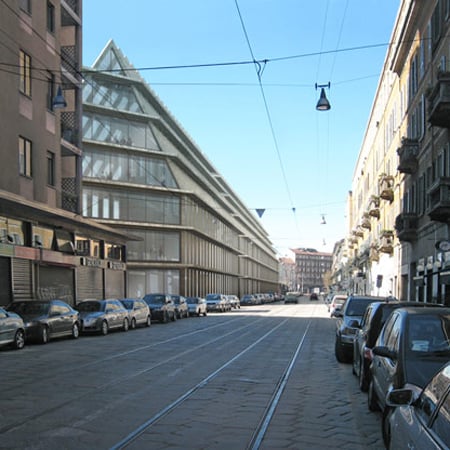
Porta Volta Fondazione Feltrinelli by Herzog & de Meuron
Swiss architects Herzog & de Meuron have unveiled plans for a new headquarters for the Fondazione Giangiacomo Feltrinelli in Milan.
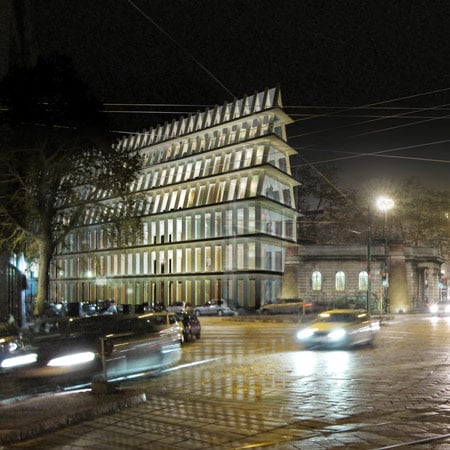
Called Porta Volta Fondazione Feltrinelli, the project will be located to the north of the city centre and will house the foundation, dedicated to the history of ideas, alongside cafes, restaurants, and shops.
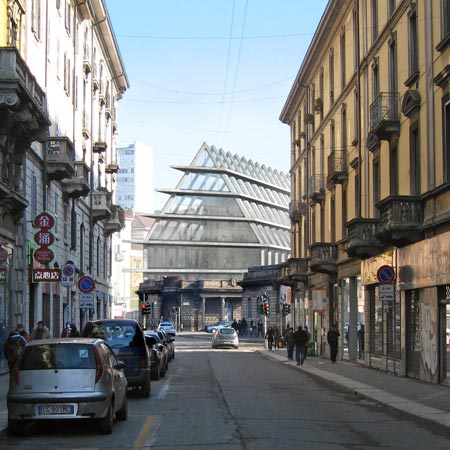
Two of the three long narrow buildings will be separated by a small gap, while the third will stand at an angle on the other side of the site to create a gateway through the new park.
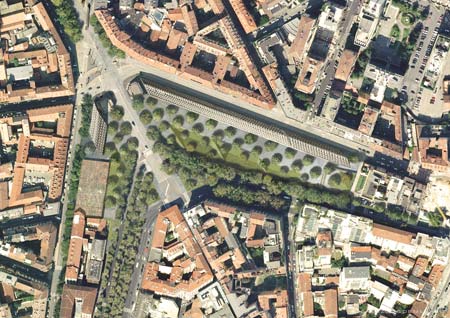
Construction is due for completion in 2013.
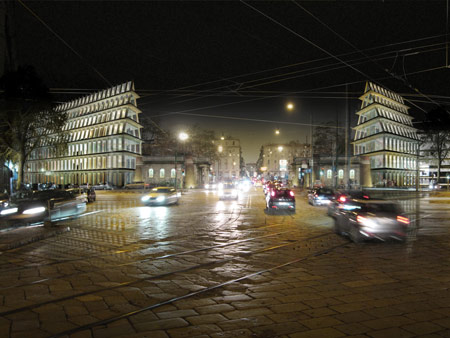
Images © Herzog & de Meuron
Here's some more information from the architects:
Porta Volta Fondazione Feltrinelli
Strengthening and Reinforcing the City
As part of the redefinition of the area Porta Volta, Fondazione Giangiacomo Feltrinelli intends to relocate its seat to the northern centre of Milan, which the Feltrinelli Group considers as an ideal environment for the foundation’s multiple activities. The overall masterplan for Porta Volta, consisting of the Fondazione, two new office buildings, and a generous green area, holds an important strategic potential for creating a positive impact on the surrounding area. This undertaking by the Feltrinelli Group has an important urban dimension in that it strengthens and reinforces the city.
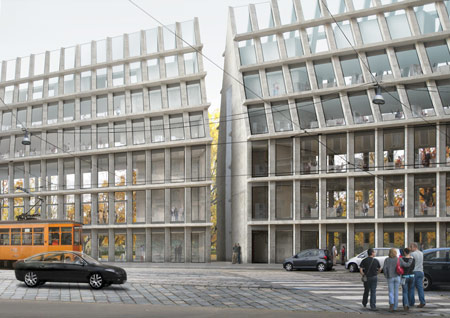
A Site Steeped in History
The historical analysis of the site drove the evolution of the design proposal. The urban organisation of Porta Volta traces back to the course of the Mura Spagnole, the ancient 15th century city walls which were the last of a series of fortifications which since Roman times have defined the city’s growing boundaries. After the opening of the bastion in the late 19th century, Via Alessandro Volta laid the basis for the city’s extension outside the ancient walls, connecting as a new, prominent urban axis the historical centre with Cimitero Monumentale. Today, the emptiness of the site is a testament to the walls and, at the same time, reminds one of the destructions this area has suffered during the Second World War.
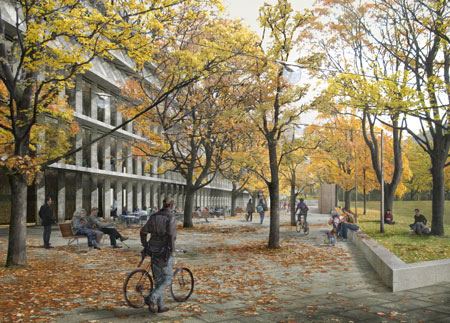
A Gate as Point of Reference within the City
Together with a series of preserved gates, the two Caselli Daziari di Porta Volta offer an important reference point within the Milanese city plan. The allocation of Edificio Feltrinelli and the Fondazione along Viale Pasubio and the allocation of Edificio Comune along Viale Montello opposite the axis Via Alessandro Volta underline this historical gate, taking up the Milanese tradition of twin buildings as in Piazza Duomo, Piemonte or Duca D’Aosta.
Besides the preservation of the Mura Spagnole’s archaeological remains, the concentration of building mass endeavours to create a generous public green area as extensions of the existing boulevards. On the street level, the new edifices will house cafes, restaurants, and shops, offering an area for interaction and recreation to the citizens.
DezeenTV: Porta Volta Fondazione Feltrinelli by Herzog & de Meuron
.
Click to play the movie about the project
A House for the Fondazione Giangiacomo Feltrinelli
A narrow gap separates the Fondazione from Edifico Feltrinelli, reflecting two autonomous constructions which are simultaneously part of an overall whole. The ground floor of the Fondazione accommodates the main entrance, cafeteria and book store, followed by the double height multi-functional space on the first floor, and an office area on the second floor. The reading room on top of the Fondazione offers researchers and interested public the opportunity to study documents from the historical collection stored in the secure underground archive.
A Milanese Project: Scale, Structure and Repetition
The new buildings are inspired by the simplicity and generous scale of historic Milanese architecture as Ospedale Maggiore, Rotonda della Besana, Lazaretto and Castello Forzesco. They are also inspired by the long, linear Cascina buildings of traditional rural architecture in Lombardy, which already were an important reference in Aldo Rossi’s work, for instance his residential building Gallaratese.
This is why we propose an elongated and narrow architecture which in a vaguely figurative way introduces a roof which melts into the facades. The structure expresses the geometrical conditions of the site in a rotation of its members and balances between transparency and spatial definition. Façade, structure and space form an integrated whole.
The redefinition of Porta Volta will intrinsically be a Milanese Project, taking up themes of Milanese urbanism and architecture, which through the course of history have led to a series of emblematic buildings for which the City of Milan is renowned.
Address: Viale Pasubio, Milan, Italy
Project Phases
Concept Design: 2008
Schematic Design: 2008 - 2009
Design Development: 2009 - 2010
Construction Documents: 2010
Construction: 2011 - 2013
Ground-breaking: 2011
Opening: 2013
Project Team
Partner: Jacques Herzog, Pierre de Meuron, Stefan Marbach
Project Architect: Andreas Fries (Associate), Mateo Mori Meana
Project Team: Liliana Amorim Rocha, Nils Büchel, Claudius Frühauf, Monica Leung, Adriana Müller, Carlos Viladoms
Client
Feltrinelli, Milan, Italy
Partner Architect: SD Partners, Milan, Italy
Structure: Zaring, Milan, Italy
M.E.P: Polistudio, Riccione, Italy
BUILDING DATA
Site Area Total: 17,268 m_
Usable Floor Area
Edificio Feltrinelli: 7’564 m_
Edificio Fondazione: 2’418 m_
Edificio Comune: 3’035 m_
Total: 13’017 m_
Facade Surface Area
Edificio Feltrinelli: 9’670 m_
Edificio Fondazione: 4’170 m_
Edificio Comune: 2’670 m_
Total: 16’510 m_
Public Green Area
Total: 12’162 m_
FIGURES
Edificio Feltrinelli: Commercial, Offices
Edificio Fondazione: Cafeteria, Bookshop, Multi-functional Space, Offices, Reading Room, Archives, Parking
Edificio Comune: Commercial, Offices